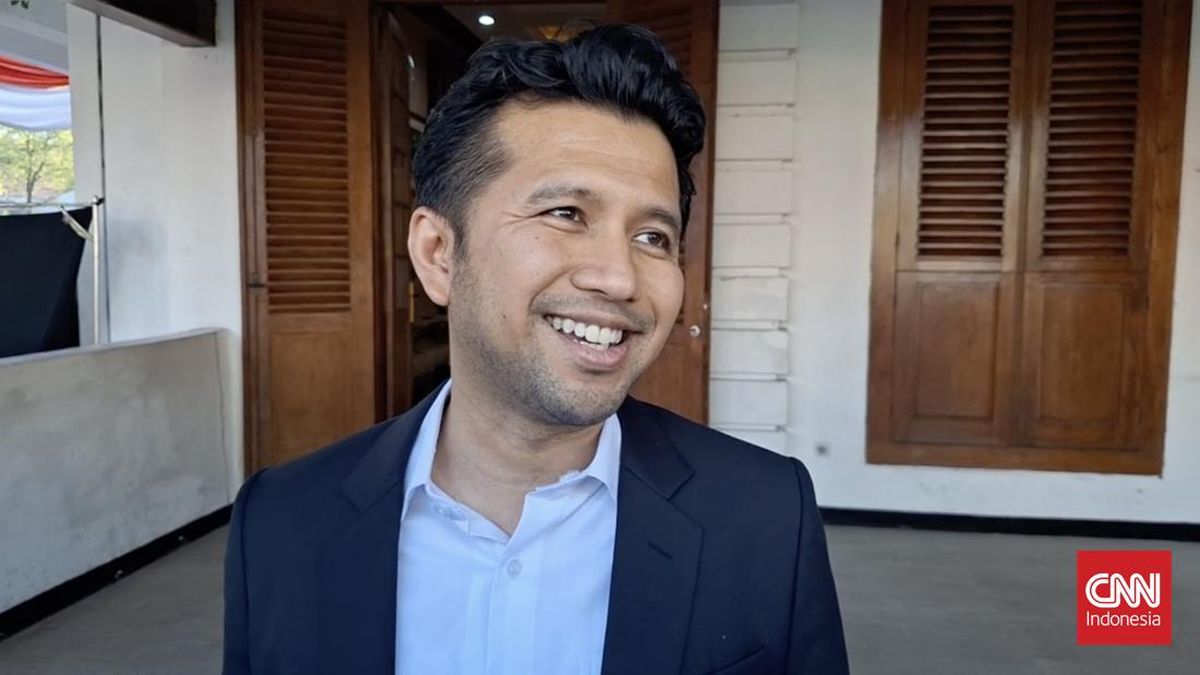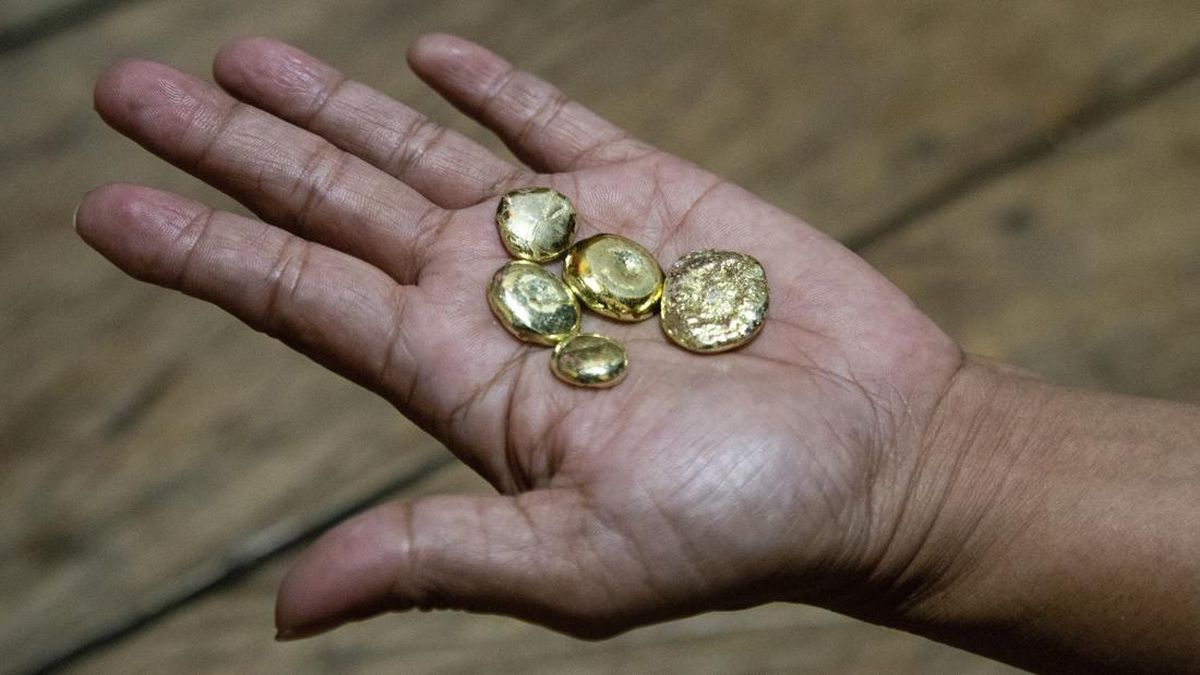Opinion
October 8, 2025 — 12.00pm
October 8, 2025 — 12.00pm
Gold’s remarkable run this year is sending a number of troubling signals about the state of the world, and the United States in particular.
The gold price broke through $US4000 an ounce for the first time overnight, having soared more than 50 per cent this year and more than doubled over the past two years.
There’s no single reason for its surge, but rather a whole raft of them, within a loose envelope of concerns about global debt levels, political dysfunction, conflicts, monetary policies and the debasement of major currencies.

Gold has soared to records, trading near $US4000 an ounce now.Credit: Getty
There might also be some effective hedging against the risk of a record US sharemarket, with concerns mounting about the artificial intelligence boom that has driven that market since the launch of ChatGPT in late 2022, about the way AI is now being financed and the vast amounts of low to no-returning capital being sunk into the sector.
At the core of the uncertainties that have drawn investors and central banks to the traditional safe haven lies America.
Loading
Donald Trump’s presidency has so far been turbulent, to say the least, characterised by erratic decision-making, bizarre appointments to his cabinet and major government agencies, massive shifts in the US’s role in global affairs and in its relationships with traditional allies, actions that challenge its constitution and laws, political dysfunction, fiscal expansion and, of course, the weaponisation of tariffs and the US dollar.
His trade wars have upended global trade and affected economies across the globe. At the same time, they caused a rise in both US unemployment and inflation, raising the prospect of stagflation, or the coincidence of shrinking economic growth and swelling inflation.
Trump’s assault on the Federal Reserve Board’s independence and attempt to pressure the US central bank into significant rate cuts has unsettled foreign investors, who fear the debasement of US monetary policy and the US dollar if the Fed – which has only recently cut its policy rate by 25 basis points – can be intimidated into monetary policies driven by Trump’s political ambitions rather than the economy’s settings.
The shutdown of the US government adds to the concerns, along with fears that neither of the major parties appears concerned about the blowout in US deficits and debt this year thanks to Trump’s One Big Beautiful Bill and its tax cuts for companies and the wealthy.
US government debt was $US35.5 trillion as of September 30 last year. It is now about $US38 trillion and rising daily. The US debt-to-GDP ratio is about 125 per cent and rising. Trump’s much-vaunted revenues from tariffs (effectively a tax on US companies and consumers) will only make a dent in the $US1-trillion-plus interest cost on its debt.
With Trump in the White House and the US and other major economies struggling to respond to destabilising debt levels, there are a lot of risks to hedge.
And the US isn’t alone in experiencing financial and political stress.
Public sector debt levels in most of the advanced economies have been surging since the pandemic and, according to the International Monetary Fund, are expected to be above 110 per cent of their GDP by the end of this year. In the first half of this year, the Institute of International Finance says global debt rose more than $US21 trillion to $US338 trillion.
Governments are struggling to get their balance sheets under control, causing political turmoil.
In recent days, France lost its fifth prime minister in three years in the midst of yet another futile effort to rein in France’s deficits and debt, while Japan’s financial markets have been roiled by the election of a conservative but fiscally expansionary leader of the governing Liberal Democrats. Japan’s debt-to-GDP ratio is about 260 per cent.
There are concerns that to deal with unsustainable debt levels and low growth, other major economies will follow Trump’s lead and seek to turbocharge growth rates via fiscal stimulus, loose monetary policies, money-printing and interest rate settings that boost inflation and devalue debt and its interest rate costs.
In such volatile and shifting circumstances, it isn’t surprising that central banks and investors are stockpiling gold - particularly as, since it’s priced in US dollars and the US dollar has weakened considerably this year (it’s down more than 10 per cent against major trading partners’ currencies) the price rise hasn’t been quite as steep when viewed through non-greenback lenses.
The weakness in the US dollar, the Fed’s rate cut, America’s deteriorating public finances and the loss of trust in Washington as an ally and a dominant but predictable and pro-globalisation player in finance, trade and geopolitics provide motivation for investors to de-risk and diversify their holdings away from US assets.
Lower US interest rates also mean lower holding and opportunity costs for gold, which generates no income.
Loading
The last time gold went on a run like this was in 1979, when high inflation and low global growth – stagflation – and concerns about the stability of fiat currencies caused the price to more than double.
The Islamic revolution in Iran, which disrupted global oil supply, and the Soviet invasion of Afghanistan added to the sense of instability and threat, much as the war in Ukraine and the conflict in the Middle East have done over the past three years.
The weaponisation of the US dominance of global finance by the G7 economies to seize Russia’s foreign exchange reserves and impose sanctions on Russia after its invasion of Ukraine is an element of a longer-term build-up of central bank holdings of gold, particularly by China, as countries try to reduce their exposure to US-dollar-dominated assets vulnerable to similar actions.
It’s not a surprise that the surge in the price has coincided with a record sharemarket and a 30 per cent rise in the value of Bitcoin.
Gold has a reasonably high correlation with both. Both gold and Bitcoin are regarded as safeguards against inflation, although Bitcoin’s role as a risk asset may also mean that, as the risk appetite of investors increases, so does the need to take out some form of hedge against it.
For centuries, gold has been the ultimate hedge. And with Trump in the White House and the US and other major economies struggling to respond to destabilising debt levels, there are plenty of risks to hedge.
The Market Recap newsletter is a wrap of the day’s trading. Get it each weekday afternoon.
Most Viewed in Business
Loading


















































